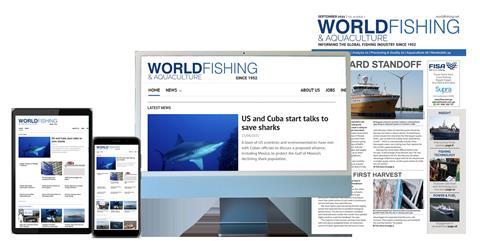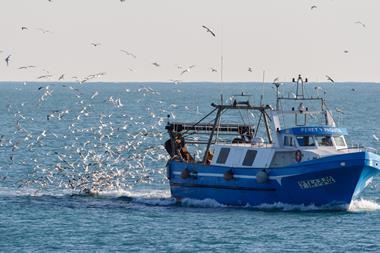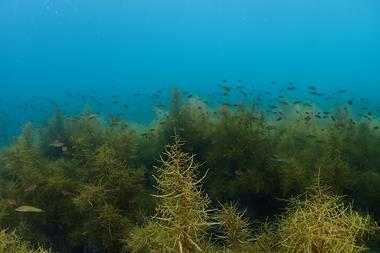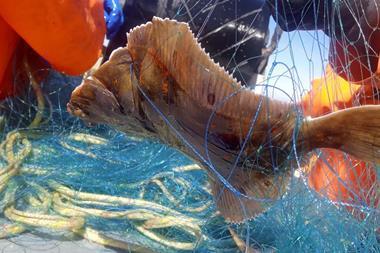With plans to onboard more brands and fisheries, the Australian company is profiting from its sustainability and traceability investments.
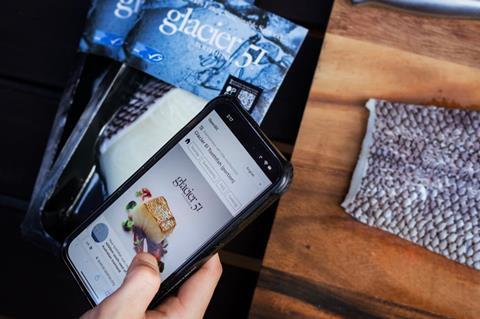
Environmental stewardship and responsible best-practice have always been at the heart of Austral Fisheries’ operations. What’s newer but equally-integral to the Australian company’s business is storytelling. Dylan Skinns, General Manager Sales & Marketing tells WF. “It’s enabled us to showcase our strengths in wild-caught seafood, the investments we have made in our fisheries and operations, while also providing the market and some of the world’s leading chefs with products that set their restaurants apart,” he said.
Austral has interests in deep-sea fishing, most notably in the sub-Antarctic for its iconic Glacier 51 toothfish, and also closer-to-home in Australia’s Northern Prawn Fishery, which hails its premium-branded Skull Island Tiger Prawns and Karumba Banana Prawns. Underscoring the company’s sustainability credentials, all four of the Australian Commonwealth fisheries that it operates have been independently certified as sustainable and well managed by the Marine Stewardship Council (MSC), while in 2016, it became the first seafood company in the world to become certified as carbon neutral, doing so under the Australian Government Carbon Neutral Program. In helping offset its carbon emissions, the company has so far planted more than 3 million native trees in Western Australia.
CEO David Carter led this sustainability charge, Skinns explained. “He’s always been forward thinking and years ahead of the curve. David said several years ago that sustainability is our north star, that the big corporates were going to want to make sure the fish they’re buying comes from sustainable sources. Probably 15 years ago, he said let’s strive to have all of our fisheries meet the MSC standard. Let’s go down that track and get our fisheries certified, starting with the toothfish.”
Today, in the toothfish fishery, Austral’s fleet is led by the technologically-advanced, 68-metre Cape Arkona. Introduced in 2020 and operating alongside older sister, the longliner Isla Eden, this highly efficient and versatile vessel is also equipped for potting and trawling, with its catches processed and frozen onboard to maximise freshness and value.
It was the first vessel in the world made capable to operate three different gear types. The reason for this, Skinns said, is that while longlining is the best method for catching toothfish, when predators such as killer or sperm whales turn up, they can take as much as 70% off the lines, so the vessel switches to trap to continue fishing. It is also then able to fish for icefish and also undertake an annual scientific trawl survey on behalf of the Australian Government to sample juvenile toothfish and icefish, providing vital information for fish stock assessments.
“We’ve got this flexibility built into the boat. So, if the whales do get out of control in five- or 10-years’ time, we’ve got a boat that we can still compete while the rest of the industry only longlines. The vessel is future-proofing our fishing operations.
“Dave Carter also calls it the [Toyota] Prius of fishing vessels. It has this kind of battery bank onboard, where it can operate on battery only when alongside. We don’t use it during steaming or fishing, we still need full power for that, but when the boat is alongside at our port calls for up to a week, we use the battery power then. We like to think it’s our first foray into that area.”
Meanwhile, a new diesel-electric vessel, Austral Odyssey, is under construction in Poland and will join the fleet and replace Isla Eden at the start of 2026.
Right now, Cape Arkona and Isla Eden are helping shape a bright future for this toothfish fishery and championing the conservation efforts set out by the Commission for the Conservation of Antarctic Marine Living Resources (CCAMLR). The fishery, which is governed by the Australian Fisheries Management Authority (AFMA) and backed by the scientific expertise of the Australian Antarctic Division (AAD), is also supported by industry-funded annual research surveys, along with a toothfish tagging and release program.
Research and experience have enabled Austral to establish a method of longlining that specifically targets the toothfish while minimising the impacts on the surrounding marine ecosystems. The crews’ understanding of both fish behaviour and habitat and the utilisation of GPS and other sophisticated tracking technologies means the baited lines can be positioned precisely where the species is known to thrive. Other techniques include weighted lines that quickly sink to the desired depths, bird-scaring lines and setting hooks at night when birds are less active. Both vessels have two observers onboard counting fish and bycatch.
All this is a “quite a turnaround” from just a few decades ago, when the fishery was on its knees a result of illegal, unreported, and unregulated (IUU) fishing, with a lot of people questioning the fishery’s future, acknowledged Skinns.

Branding differentiation
Skinns has been with Austral for 23 years, and when he started with the company, it was 100% focused on exports and commodities.
“We sold toothfish as toothfish and prawns as prawns (tiger, banana and endeavour). There wasn’t much storytelling going on, and we were a bit at the mercy of the market – we were price takers and had been for a long time. It was probably only about 12 years ago when I thought, you know, we’ve got some great stories to tell. We catch all our products wild, and we should be telling this story a lot better, particularly through branding.”
He continued: “We were one of the first to do it in seafood. But we’d seen other people out there that had done a great job in promoting their protein and putting brands on menus – creating that buzz and sizzle.”
Branding gave the opportunity to Austral to differentiate its 1,200 tonnes of headed, gutted and tailed (HGT) toothfish, Skinns said.
“Up until then, it had been a hard sell. Even though we’re an Australian company, we were MSC-certified and doing the right thing, we were tarred with this bad brush that the fishery was not sustainable because of historic illegal fishing. That’s how we built Glacier 51. Initially, it was just for the Australian market. We thought, we’re an Australian company, we should have an Australian presence, so let’s build this brand and put the fish on the menus of all the top restaurants in the country and try to change the mentality that existed.”
Demand soared, and though social media, this extended into new markets, starting with Hong Kong and New York. Fast forward 10 years to today, and Glacier 51 is in 17 countries, featuring on the menus of many world-renowned restaurants.

Winning markets
Austral’s toothfish are caught at depths of around 2,500 metres. Between 60 and 70% of its production is HGT that’s done at sea, with the toothfish trunks then packed into Glacier 51 boxes. However, in Cape Arkona, the company has the only vessel in the world that’s doing vacuum-sealed toothfish fillets at sea, with the process maximising the value of the fish.
“Where we used to bring containers back from Mauritius to Perth – then unload, thaw, fillet, re-box and send out again, we do all that at sea on the Cape Arkona. That goes from unload straight to market – Hong Kong, United States, China. We’re saving a lot there and delivering a product that’s ready to go straight into foodservice,” Skinns said.
With the exception of the guts, all of the by-products are utilised too.
As for what’s caught the attention of multiple discerning markets, Skinns suggests that the bright white fillet has a “wow-factor” for chefs and that it has an “incredible flavour”.
“That’s why a lot of great chefs love using it, because it’s a really great-tasting product. There’s nothing else that tastes like it, it’s very unique. It also takes on a lot of culinary preparations. So many different nationalities love eating it. We call it the ‘wagyu of the sea’. This is a fatty fish that cooks up really well in those same restaurants that use wagyu steaks. That’s why it has landed on the menus of some of the best restaurants around the world.”
The number one market currently for Glacier 51 is Dubai. With its seven-star hotels, it’s a market that Skinns says “wants the best of the best”. It’s also one that looks to have branding on its menus.
“Prior to the development of Glacier 51, there was next to no toothfish in Dubai. We pretty much created this market across the UAE. They didn’t know what it was until we arrived and started to promote the amazing ocean to plate story.”
The United States is a close second, and Austral has an exclusive supply arrangement with all of the Nobu North America restaurants. It was also the first branded fish to appear on its high-end menu.
“Branding on menus, whether it’s been Nobu or someone else, that’s where the growth has come from. Someone spots it and says, right, that fish tasted amazing and I need it in my restaurant.”
Meanwhile, in China and Hong Kong, Austral has an agreement in place to supply City’super. While it’s a high-end retail group that sells a lot of seafood, Skinns was delighted to find on a recent visit to a store that as much as 70% of the frozen fish cabinet had been allocated to Glacier 51.
“It was incredible,” he said. “You go to any normal supermarket and 70% of the cabinet might be farmed salmon. But City’super was celebrating Glacier 51 as its flagship product.”
Skinns added: “It’s great that we’ve got both foodservice and retail. Because when situations come along – like COVID – we continued to be active. We converted everything into retail, and it was successful. A legacy of that is you can buy Glacier 51 in a growing number of retail markets.”
Among the product’s most recent markets is India, with the opening coming hot on the heels of the Australia-India Comprehensive Economic Cooperation Agreement (CECA) signed in December 2022. This allowed for tariff reductions on a wide range of Australian goods, including seafood.
CECA was quickly followed with an FTA between Australia and the United Kingdom.
“The free trade agreements have helped us to push into those markets. We knew the chefs and the restaurants there have wanted Glacier 51. They’d heard about it, of course, but the tariffs have been too high to get it in there. But now, we can really start to build out those new markets.”
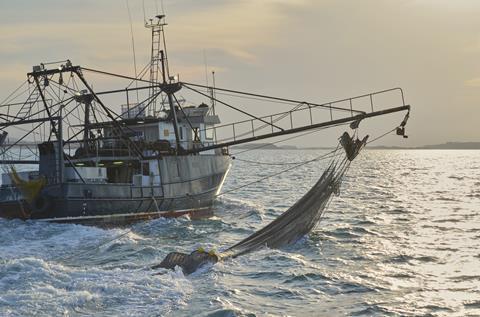
Connecting consumers
While getting the fisheries science right and securing MSC-certification formed the first two pillars of Austral’s overarching strategy, the third is its traceability system. This leverages OpenSC digital trace technology, embedded in blockchain, to guarantee the provenance and full history of every Glacier 51 toothfish fillet and portion pack – providing details of the entire journey from the sub-Antarctic waters to consumers’ plates.
This is achieved by tagging every single fish that comes onboard Cape Arkona and Isla Eden with a unique RFID tag. That tag then accompanies that fish through the supply chain until it is processed into fillets. At which point, the RFID tag gets turned into a QR code which goes on the packaging and follows the fish all the way through to the point of sale.
If a fillet creates 18 portions, then the system generates 18 QR codes, explained Skinns. The end result is that when the finished, packaged product arrives in a restaurant kitchen or a retail cabinet, scanning the code will show on a map precisely where it was caught and where it travelled to for processing. It also provides details of the fishery’s MSC certification and how the company has become carbon neutral.
While creating the opportunity to connect fishery and consumer, it’s also another means to tell the story of the fish, the impact of catching it, the fisheries management, and the environmental efforts that are in place, Skinns said, adding that because OpenSC uses blockchain technology to protect data integrity, it’s giving insights that can be trusted.
“People are hungry for information. They want to know where the product comes from, and what a story we’ve got – where this fish comes from and how it gets to people’s plates. Scanning a QR code – this consumer experience – shows them exactly where we caught it, where we processed it, and the journey it has taken getting there.”
Feedback from the seafood industry, from Austral’s peers, chefs, retailers etc. has been really positive, he said.
“Whether it’s responsible fishing, branding or telling stories – we’ve been told many times that we’re leaders in seafood sustainability.”
These practices and methods are also being incorporated into its other fisheries, including differentiating the Skull Island Tiger Prawns.
“Millions of prawns are sold worldwide every year. We want to show what sets our prawns apart – the provenance, the MSC-certification, the traceability, the carbon neutrality, and so on, so that when a chef opens a box of them in Hong Kong, New York or London, they’ll know why they are special. They’ll know the Skull Island brand and what it stands for, as well as exactly when and where the prawns were caught, by what fisherman, when they were frozen and how they reached their kitchen.
“The Austral stable of products are quite unique. I don’t think there’s another seafood company that has a stable of wild-caught seafood that can claim to be MSC, carbon neutral and give blockchain traceability to customers, as well as appearing on the best menus around the world.”
Looking ahead, and following on from the success of Skull Island Tiger Prawns, the company recently signed an exclusive supply agreement with one of Australia’s largest retailers for its Karumba Banana Prawns.
“They want to use that brand exclusively in all their retail stores. That’s another good win for us. They’d seen the success of Glacier 51 and Skull Island and made the move for Karumba,” Skinns said.
Looking ahead, Skinns said there’s a lot of opportunities that exist with fisheries in and around Australia, particularly in situations where the owners of those fisheries are getting older and there’s no family succession. Indeed, the company receives many approaches to help with management, ownership and brand strategies and recently invested into Australia’s northern finfish fishery operating trap vessels catching primarily Goldband snapper under the Mermaid Shoal brand.
It’s also looking very closely at octopus, he said.
“We think the industry over the next 5 years is set for consolidation and maybe tapping into other fisheries to complement our existing stable of products. Yes, I think there are other fisheries that we can invest in, but we will continue to stay in our lane – with wild-capture fisheries. We will use the same philosophy as with all our other brands: we’ll get the science right, we’ll pursue MSC certification, ensure it works from an emissions standpoint. And then we’ll build the brand.
“We’ll continue with what we know, and maybe – hopefully – one day become Australia’s largest supplier of wild-caught, sustainable seafood, with lots of stories to tell,” he said.

Topics
- AAD
- AFMA
- Austral Fisheries
- Australia
- Australian Government Carbon Neutral Program
- Business & Finance
- CCAMLR
- City’super
- Fisheries
- Fishing Technology
- Glacier 51
- Greener fishing
- Interviews
- Karumba Banana Prawns
- MSC
- New Vessels
- Newbuild
- Nobu
- Northern Prawn Fishery
- Seafood
- Skull Island Tiger Prawns
- Sustainability
- Toothfish
- Traceability

